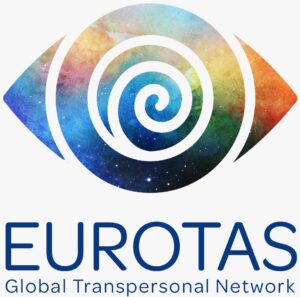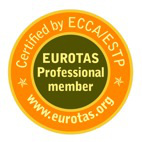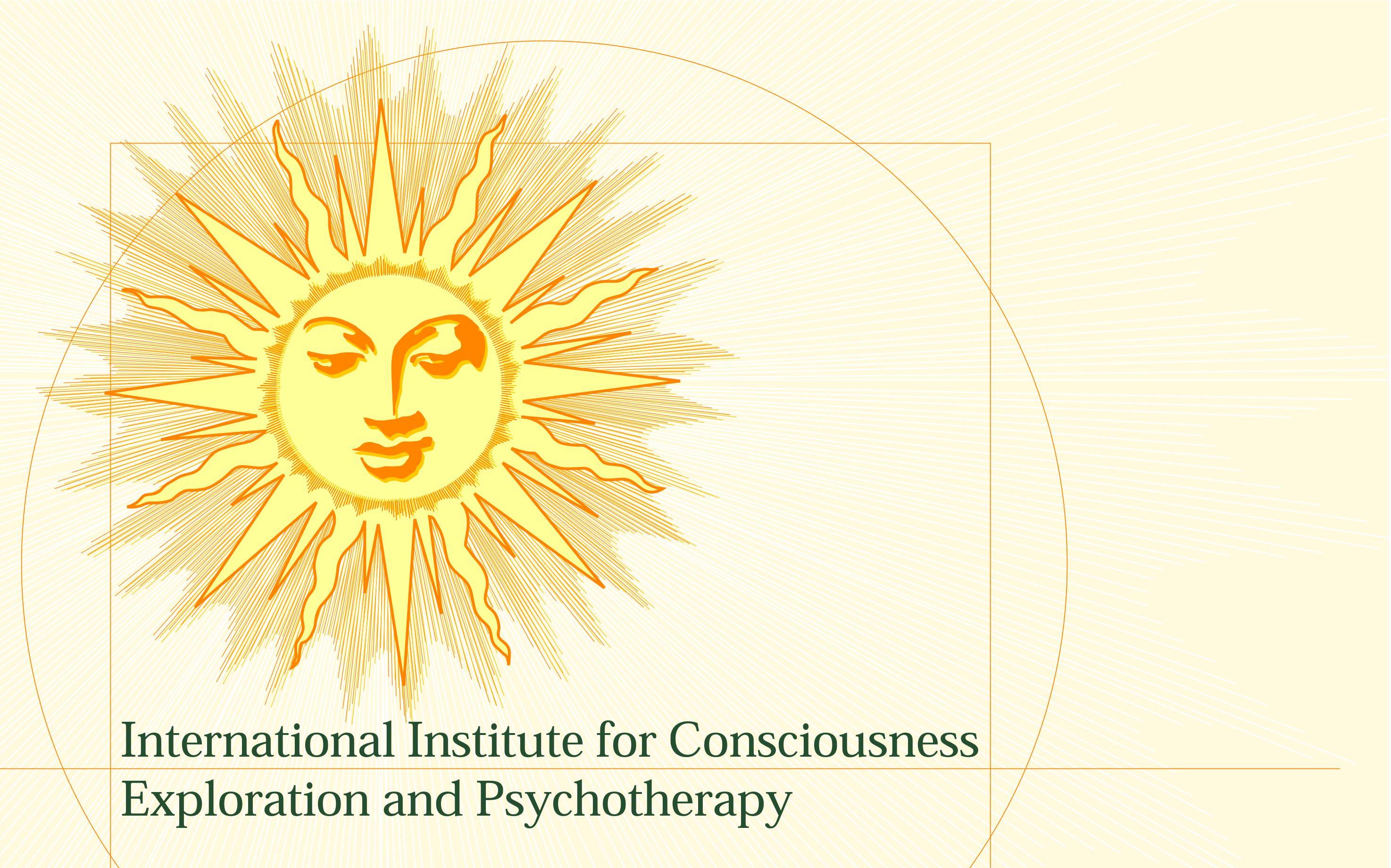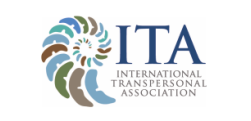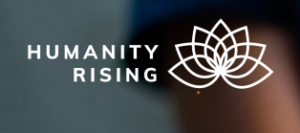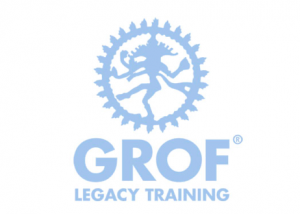
Módulo N-VI, Sed de Totalidad Respiración Holotrópica
"SED DE TOTALIDAD" Las adicciones proceden de la búsqueda insatisfecha de totalidad. Cuando el adicto descubre este incesante y infructuoso periplo se le revelan grandes vías de superación de la mismísima adicción y la entrada en la dimensión espiritual. Desde sus inicios, en 1976, miles de personas en múltiples lugares del mundo han utilizado esta técnica con impactantes resultados terapéuticos. La Respiración de Síntesis (R.S.), Respiracion Transpersonal (R.T.), la Respiración Empagénica, en definitiva, inspirada en la Respiración Holotrópica de Stanislav Grof, es una de las más poderosas y eficaces técnicas de psicoterapia experiencial y de autoexploración profunda existentes en el campo de la Psicología Transpersonal. Esta, se basa en la hiperventilación, las músicas evocativas, el trabajo corporal y la realización de mandalas. Sintetiza antiguas tradiciones espirituales y el simbolismo universal con los más recientes descubrimientos sobre el funcionamiento del cerebro.
A QUIEN VA DIRIGIDO Se recomienda en situaciones de angustia o ansiedad, sensación de malestar en el cotidiano, estados depresivos, recuperación de adicciones, crisis vitales, fobias, situaciones postraumáticas (abusos, violencia familiar o de todas las índoles...). Y también a aquellos que deseen profundizar en la autoexploración, el autodescubrimiento, el despertar espiritual y la ampliación de la conciencia.
CUALES SON LOS BENEFICIOS DE LA RESPIRACIÓN HOLOTRÓPICA Permite activar el fantástico poder de curación de los estados de conciencia ampliada e integrar los diferentes planos de la misma. Su principal propósito es alcanzar una mayor autocomprensión y llegar a la raíz de los problemas emocionales y psicosomáticos. Además, nos ayuda a liberar aspectos de la personalidad que impiden un fluido desarrollo de los talentos y capacidades creativas que existen como potencial en cada ser humano. El uso consecuente de esta herramienta pone al descubierto los problemas en vez de encubrirlos, aumenta las posibilidades de llegar a una resolución auténtica de éstos y conduce no solo a una transformación personal, sino también a una apertura espiritual. Tanto en nuestro psiquismo como en nuestros cuerpos, portamos huellas de distintos acontecimientos traumáticos que no hemos podido elaborar y que son origen de síntomas y perturbaciones diversas.

RESPIRACIÓN HOLOTRÓPICA de Stanislav Grof Terapia Conocimiento Auto-exploración Conexión con el cuerpo Ampliación de la conciencia
"ACTIVIDAD TERAPÉUTICA ESPONTANEA" Permite activar el fantástico poder de curación de los estados de consciencia ampliada e integrar los diferentes planos de la consciencia humana. Asociada a otras técnicas terapéuticas, sintetiza antiguas tradiciones espirituales y el simbolismo universal con los más recientes descubrimientos sobre el funcionamiento del cerebro. Según Stanislav Grof la Respiración Holotrópica provoca una “actividad terapéutica espontanea” y según la psicoterapeuta Bernadette Blin, “la hiperventilación permite entregarse al curador interior y explorar los reinos del inconsciente” A menudo de utiliza como terapia complementaria en psicoterapia, la respiración Holotrópica es eficaz contra: La neurosis traumática (Traumas del pasado) · La depresión · La ansiedad y la angustia · Las fobias · La migraña · Y más…
RETIRO TRANSPERSONAL EN MONTSERRAT Después de la llegada a L' Hort de la Riera y una vez instalados en las respectivas habitaciones, empezaremos con el Ritual de apertura y la presentación informal del grupo. A continuación, realizaremos una meditación de Conciencia-Presencia y el Trabajo Corporal de preparación con un toque de Animasophía término acuñado por Gabriel Jaraba, y un conjunto de actividades al que titulamos “Rompiendo Máscaras”. Después de un descanso, empezaremos a preparar la Respiración Holotrópica: formación de las parejas para respirar y atribución de los diferentes roles. La mitad del grupo respirará el sábado y la otra mitad, el domingo. Tras la comida, empezaremos la primera de las sesiones de Respiración Holotrópica. Y después de una cena proseguiremos con la primera sesión de integración. Al día siguiente, se realizará la segunda sesión de Respiración Holotrópica, y después de comer, la segunda sesión de integración que finalizará con el Ritual de Clausura: un ejercicio de cierre que nos permitirá sellar un fin de semana intenso y transformador.
PROGRAMA: Viernes 13 de junio 2025 Hora de llegada 6:00 PM Presentación del grupo. El Camino del Psiconauta, el legado de 50 años de estudios Stan Grof, con sus descubrimientos más recientes. Introducción de la técnica, para alumnos nuevos, en subgrupos. Cena y alojamiento. Sábado 14 de junio 2025 Desayuno Trabajos previos a la Respiración Holotrópica: Conciencia- Presencia, Primer Turno de Respiración Holotrópica. Comida Integración Cena y alojamiento. Domingo 15 de junio 2025 Desayuno Segundo turno de Respiración Holotrópica Comida Integración Ritual de Clausura.
A cargo de :
Magda Solé y Jaume Mestres
Información e inscripciones: transpersones@gmail.com
Tel. 667 366 866
Plazas limitadas
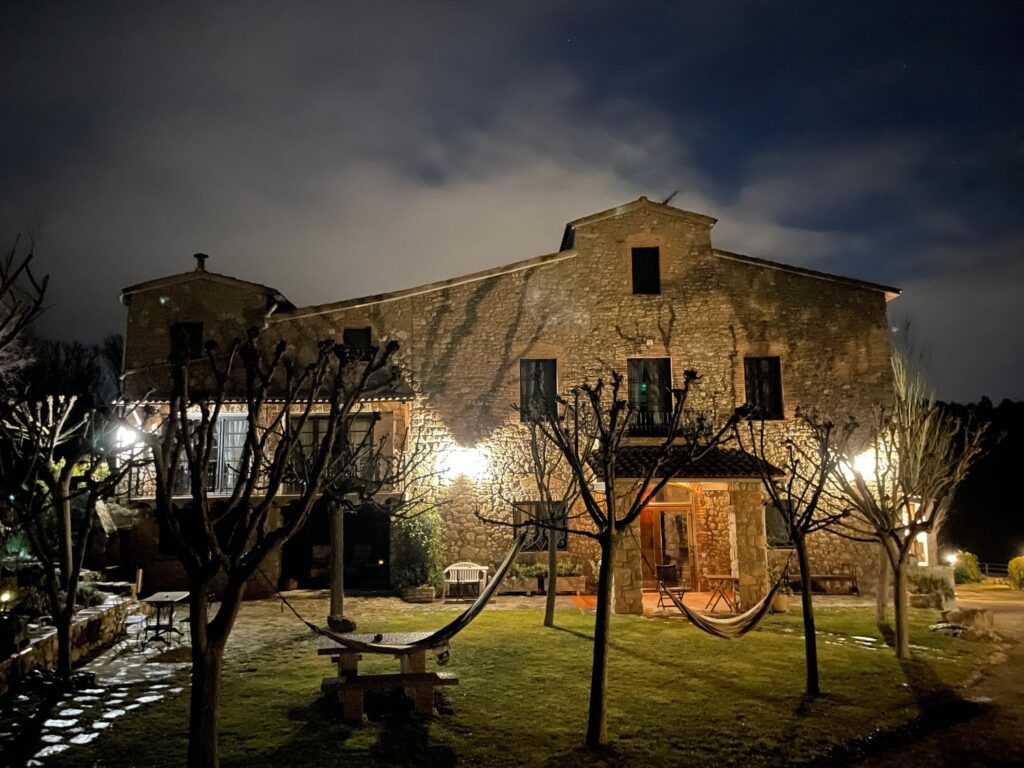
Effects of conscious connected breathing on cortical brain activity, mood and state of consciousness in healthy adults
Abstract
Breathwork as a means of inducing non-ordinary states of consciousness is gaining traction as a potential therapeutic modal- ity. We examined the effects of breathwork (in the form of connected breathing) on electroencephalography (EEG) and mood in 20 healthy participants (aged between 23 and 39 years (female = 11, Mage = 29). In addition, to compare with other means of inducing non-ordinary states of consciousness, we assessed the subjective effects of breathwork using the 11 Dimension Altered State of Consciousness questionnaire. EEG spectral power analysis of eyes closed rest recordings before and after the breathwork session showed a decrease in delta (1–4 Hz) and theta (4–8 Hz) frequencies in frontotemporal and parietal regions, respectively no changes were seen in Alpha (9–12 Hz) and Beta (12–30 Hz) bands. However, after decomposing the beta waves in Beta 1 (12–15 Hz), Beta 2 (15–20 Hz), Beta 3 (20–30 Hz), decreases in power were observed across Beta1 and Beta 2 in parietotemporal regions. Notably, the spectral power in gamma increased in experienced practitioners. Scores on the Profile of Mood States questionnaire showed a reduction in negative affect (anger, tension, confusion, and depres- sion) and an increase in esteem. Scores on the 11D-ASC scale indicated that subjective experiences during breathwork were similar to those after medium to high doses of psilocybin, suggesting the occurrence of experiences of mystical quality. Present results indicate that breathwork changes brain activity and mood, and induces mystical experiences. These results are promising and suggest that such techniques could be useful to improve mental well-being.
Controlled breathing techniques (commonly called breath- work) have been employed across various contemplative and religious traditions to induce meditative states and changes in physiology through the combination of attentional guidance and spontaneous, deep, accelerated breathing (Vago & David, 2012). These techniques have also become incorporated within modern breathwork practices and are increasingly applied in therapy context as body-mind complementary health practices (Victoria & Caldwell, 2013), due to the inherent connection of the breath not only with our physiol- ogy but also with our emotions (Homma & Masaoka, 2008).
Scientific research shows that regulating one’s own breathing can induce psychological changes such as a reduction in anxiety. For instance, slow-paced breathing in healthy adults has been found to increase vigor and to reduce tension, depression, hostility and confusion as meas- ured by the Profile of Mood States questionnaire (Fumoto et al., 2004; Yu et al., 2011). Recently a review of sixteen studies indicated that a range of breathwork interventions resulted in a decrease of anxiety in adults with clinically diagnosed anxiety disorders. In contrast, two of these stud- ies, applying Surdashan Kriya Yoga (including alternate nos- tril breathing) and respiratory biofeedback-assisted therapy, found an increase in anxiety and depression (Banushi et al., 2023). Notably, the majority of studies used slow breathing techniques while in particular those studies utilizing slow diaphragmatic breathing showed positive effects on out- come measures. A review including three studies in healthy adults indicated that after implementation of a diaphrag- matic breathing intervention breathing rates decreased and stress was reduced as indicated by lower scores on the stress subscale of the Depression Anxiety Stress Scales-21 (DASS- 21) and reduced respiratory rate, salivary cortisol levels, sys- tolic and diastolic blood pressure (Hopper et al., 2019). A recent meta-analysis of 12 randomised-controlled trials in healthy adults (10 studies were primarily focussed on slow- paced breathing and 2 studies on fast-paced breathing) on self-reported/subjective stress showed that breathwork was associated with lower levels of stress than control condi- tions (Fincham et al., 2023). The above studies demonstrate that particularly slow-paced breathing might have a positive effect on lowering psychological and physiological stress in adults with or without anxiety disorders. Slow breathing has as any rate from 4 to 10 breaths per min (0.07–0.16 Hz). The typical respiratory rate in humans is within the range of 10–20 breaths per min (0.16–0.33 Hz) (Zaccaro et al., 2018).
In addition to induce psychological and physiological changes, breathwork has been found to change brain activity in healthy subjects, as measured by electroencephalography (EEG). With respect to slow paced breathing, as well as beta-power (Stancák et al., 1993) as alpha-power were found to increase while theta power was found to decrease (Fumoto et al., 2004; Yu et al., 2011). More recently, results of a study in healthy subjects on the effects of slow breathing (bradyn- pea) and fast breathing (tachynpea) on EEG power indicated that fast breathing increased theta power in frontal parietal and occipital areas while slow breathing did not result in any change in theta power (Sinha et al., 2020). Research shows that the frontoparietal network demonstrates a large degree of connectivity to many diverse brain networks and is crucial for supporting superior cognitive functioning (Marek & Dosenbach, 2018).
More Information : https://link.springer.com/content/pdf/10.1007/s12144-023-05119-6.pdf
Breathing Their Way to an Altered State
Published Jan. 9, 2024 Updated Jan. 10, 2024
Damien Maloney for The New York Times
As psychedelics move from the underground to mainstream medicine, clinicians aspiring to work in the field are inducing altered states with deep breathing.
The instructions were simple: Lying on cots while wearing eyeshades, participants were directed to take deep belly breaths without pause to the beat of fast-paced music booming from loudspeakers.
The exercise, they were told, had the potential to induce an altered state of consciousness so profound that breathers sometimes describe it as reliving the terrifying moment of their birth. Past participants claim to have caught glimpses of past lives.
A few minutes into the session, which lasted nearly three hours, several participants began to weep. Some shook their limbs wildly, looking possessed. An outsider walking in would have been startled by the scene.
But the dozens of attendees at the recent breathwork workshop in San Francisco were far from hippies or cult initiates. They were health care professionals completing the final step of a certificate program in psychedelic therapy.
The vigorous modality, known as holotropic breathwork, is offered at the end of an eight-month training to provide a lawful taste of the therapeutic potential and pitfalls of altered states of consciousness.
Dr. JJ Pursell, a naturopathic doctor from Oregon, was among the trainees who walked into the early October session skeptical that a couple of hours of intense breathing could induce anything close to a psychedelic trip. But she was stunned.
“The depth of what I experienced was so similar to psilocybin,” Dr. Pursell marveled, referring to the psychoactive compound in magic mushrooms. “It was trippy.”

Students in a San Francisco breathwork seminar wept and shook their limbs. “The depth of what I experienced was so similar to psilocybin,” Dr. JJ Pursell recalled.Credit…Damien Maloney for The New York Times
A Promising Field of Study, Long Fallow
The demand for psychedelics as tools for healing has exploded in recent years, fueled by promising clinical studies, loosening drug laws and a growing number of celebrities who have come out as psychonauts. The N.F.L. star Aaron Rodgers described ayahuasca ceremonies as a catalyst for “deeper self love.” In her new autobiography, the actor Jada Pinkett Smith credited ayahuasca sessions with putting an end to her suicidal ideation. And ketamine, an anesthetic that induces a dissociative, psychedelic-like state, has become an increasingly popular treatment for depression among people who get it at clinics or self-medicate.
This cultural shift was turbocharged by the author Michael Pollan’s 2018 book, “How to Change Your Mind,” which was adapted into a Netflix series. Psychedelics have also been at the center of popular recent novels and streaming dramas, including the Hulu series “Nine Perfect Strangers,” in which Nicole Kidman plays an underhanded healer at a retreat center called Tranquillum House.
As the stigma of psychedelic use recedes, hundreds of clinicians are seeking formal training to help resurrect a field of medicine that was eagerly pursued in the 1950s and ’60s, but was hastily abandoned after President Richard M. Nixon announced the war on drugs.
Mental health experts say that traditional interventions to treat depression, trauma and addiction are failing many patients in the United States, which is grappling with a high suicide rate and an opioid addiction epidemic that killed approximately 75,000 peoplein 2022.
“In psychiatry and psychology, we’ve hit a brick wall,” said Janis Phelps, the director of the Center for Psychedelic Therapies and Research at the California Institute of Integral Studies, the first program of its kind at a university.
Since Dr. Phelps, a psychologist, started the training program in 2015, the quest to resurrect psychedelic medicine has made major leaps.
Several universities have opened psychedelic-research centers. The federal government has begun to fund psychedelics studies. Voters in Oregon and Colorado have approved measures to legalize the therapeutic use of psychedelics. And researchers are optimistic that the Food and Drug Administration could approve the clinical use of MDMA, the drug known as ecstasy, as early as this year.
This nascent era comes with formidable challenges. Decades of prohibition have made it difficult to rigorously study the limitations and perils of these compounds, which for some people can be more destabilizing than healing. Psychedelic therapy often straddles medicine and spirituality, raising thorny questions of who should get to guide these experiences and what sort of credentials ought to be required. And the vulnerable state they induce has enabled predatory behavior from guides and even licensed psychotherapists.
The training program at the Center for Psychedelic Therapies and Research, which has enrolled more than 1,200 students since 2016, was created with the aim of establishing best practices and ethical guidelines as psychedelics move from the underground to mainstream medicine. Since its founding, several other similar training programs have emerged.
They have all wrestled a basic quandary: How do you teach a form of therapy that remains largely illegal?

Participants took turns practicing the breathing exercise and tending to a peer.Credit…Damien Maloney for The New York Times
Powering Down the ‘Thinking Brain’
Dr. Caroline J. Hurd, a palliative care doctor from Seattle, enrolled in the certificate program because she had grown frustrated by the limitations and side effects of medications commonly used to alleviate the pain and anguish of terminally ill patients.
“Most of the tools that we have to treat symptoms lead to disconnection,” she said, describing patients who spend their final days groggy and emotionally withdrawn. She was intrigued by clinical studies that showed that psychedelics eased the fear and dread of people facing grim prognoses, allowing them to be more present and emotionally resilient in their final days.
Her own mortality was not top of mind when she slipped on her eyeshades and began taking heaving breaths at the October workshop, her first time trying holotropic breathwork. During the early stages of the session, which included fast-paced songs, Dr. Hurd said her “thinking brain really turned off.” As the music slowed toward the end, a mesmerizing image crystallized in her mind: Dr. Hurd saw herself lying on a nest of sticks, surrounded by her children, at the moment of her death.
Far from being alarming, the vision filled her with wonder and made her feel as if she had grasped something ineffable about death. “I don’t need to worry about what’s on the other side,” she said, describing the insight. “It could be as simple as, I’m just returning to the dirt and becoming soil, and that’s OK.”
Dr. Bayla Travis, a psychologist in Oakland, Calif., was drawn to the training because she has come to conclude that chronic pain — her specialty — is often a physical manifestation of repressed emotional trauma. In the future, she hopes to help patients confront difficult memories and emotions with the aid of psychedelics.
Dr. Travis said she had embarked on the breathwork session with low expectations because a previous workshop she had participated in had been unremarkable. She was in a cheerful mood when the recent training began, she recalled. But within minutes, Dr. Travis was overcome by a wave of heavy emotions that made her cry and shake as she tapped into what she described as a “deep, deep sorrow that wasn’t particularly about anything.”
After cycling through periods of sadness and bliss, Dr. Travis had a powerful vision as the session was winding down. She saw herself being carried by an adult. The image was deeply soothing. “I think it means I get to be comforted,” Dr. Travis said. The many tears she shed felt a bit mysterious, she added.
“It was like, Oh, this is under the surface and maybe I’ve been walking around with this not having had an opportunity to give it expression.”
At 92, an Early Booster Sees Hope
Shortly after scientists in Europe and the United States began sampling and studying psychoactive drugs like LSD in the 1940s, some psychiatrists saw potential for therapeutic applications. In combination with psychotherapy, the compounds appeared to help some patients reframe traumatic memories, overcome addiction and overhaul their mind-set.
A leading advocate of their therapeutic promise was the Czech-born psychiatrist Stanislav Grof, who wrote several books documenting what he saw over years of using psychedelics and administering them to patients in Prague and Baltimore.
“Psychedelics, used responsibly and with proper caution, would be for psychiatry what the microscope is for biology and medicine or what the telescope is for astronomy,” he wrote in “LSD Psychotherapy,” a book published in 1980.
By then, the war on drugs had stifled the field, prompting Dr. Grof to develop a new breath-based modality that borrowed from ancient Indian and shamanic practices. Holotropic breathwork — a term that blends Greek words that mean moving toward wholeness — became a means to induce altered states of consciousness without drugs.
The effects of holotropic breathwork on the brain and mood have not been widely studied. But in a study published last year, European researchers found that the modality affected brain activity and mood in ways “that are associated with a better mental condition.”
In an interview, Dr. Grof, 92, said that he had discovered, much to his surprise, that breathwork sessions could be as powerful as psychedelic trips. Altered states, whether breath- or drug-induced, he said, often allow people to unravel the root causes of their suffering quickly, making them more effective than conventional treatments like antidepressants.
According to Dr. Grof, current therapies seek to suppress patients’ symptoms and make sense of problems rationally through psychotherapy. But, he added, “some of the most important problems cannot be resolved verbally.”
In the twilight of his career, Dr. Grof speaks ebulliently about the resurgence of psychedelic-assisted therapy. But seizing their potential will require administering them with strong safeguards, he said.
“Right now, so many people want to take psychedelics,” he said. “And few people have the training” to guide these experiences, he added. Experts say holotropic breathwork should be done under the supervision of trained facilitators.

Dr. Stanislav Grof, an early advocate of psychedelic therapies, has emphasized the importance of proper training and supervision for psychedelic experiences.Credit…Damien Maloney for The New York Times
‘Bouncing Between Hell and Heaven’
Laura Berg, a psychiatric nurse from New Mexico, said she had learned the hard way about the perils of self-medicating with psychedelics.
Ms. Berg, who spent most of her career working for the Department of Veterans Affairs, turned to psychedelics after losing faith in the cocktail of antidepressants and mood stabilizers she was prescribed as she struggled with burnout and feelings of helplessness caring for Iraq war veterans.
Taking the drugs in ceremonies and festivals left her feeling dazed and withdrawn for years, Ms. Berg said. She struggled to reconcile the mind-bending and heart-opening experiences she had on psychedelics with the grim reality of her clinical work.
“It was kind of like bouncing between hell and heaven,” said Ms. Berg, a recent graduate of the California Institute of Integral Studies training.
In 2016, Ms. Berg attended a holotropic breathwork workshop, which she said made her realize that she had the capacity to heal herself relying less on medication. That set in motion a personal and professional transformation for Ms. Berg, who became trained to facilitate holotropic breathwork sessions and helped in the October session.
Since then, Ms. Berg has watched with guarded optimism as psychedelics have become increasingly accessible and coveted. As things stand, there are far more people seeking out these treatments than practitioners who are skilled and experienced in guiding them. “It’s not a panacea,” she said. “It’s not going to turn you, necessarily, into an enlightened person.”


